The words “full moon” in many languages

It is said that there are more than 6,000 languages worldwide (this is hard to imagine) and it is a fascinating concept to think, there are probably as many words for “full moon”.
Here we begin our little journey to the full moon. A few words about the fascinating quest of the greater purpose, that includes the full moon circulating through our lives. In layman’s terms and not always scientific (astronomy experts – don’t look too closely!). We would like to wish you illuminating moments. Enjoy!


It is said that there are more than 6,000 languages worldwide (this is hard to imagine) and it is a fascinating concept to think, there are probably as many words for “full moon”.
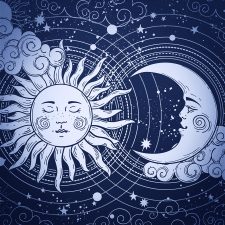
A full moon is when the Sun and the Moon are facing opposite, being in opposite direction from an Earth perspective.
This might feel astonishing if one imagines that the Moon is on one side, the Sun on the other and the Earth in between? Shouldn’t the Earth throw a shadow onto the Moon? Bingo – this is exactly what she does! But only when the Moon is exactly on the Earth orbit, the so called “ecliptic”. When this takes place, we speak of a lunar eclipse!
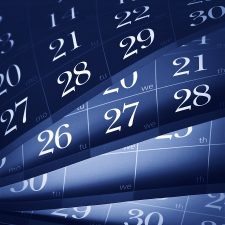
The Moon needs 27.33 days to circle around the Earth. Something that is also referred to as “sidereal time”. But because the Earth orbits the Sun, just like the Moon orbits the Earth, the Moon has to travel two further days in order to resume the same position to the Earth and Sun. This is then called the “sidereal time”. In order to determine the point of time of the reoccurring full moon, the sidereal time serves as basis.

We already know now that the moon month is mostly shorter than the calendar month, being on average approximately 29.5 days. If full moon falls on the first or second of a month, it is possible that another full moon occurs in the same month, for instance in July 2004:
Friday, 2 July 2004, 01:08:54 pm
Saturday, 31 July 2004, 08:05:06 pm
This event is also known as “blue moon”.

The answer is: “everywhere at the same time”. This refers to the so called Universal Time (UT) though, which is used for general astronomical events. We have already learnt that full moon is an astronomical event, where the moon, sun and the earth play a role by being in a specific position. So, full moon takes place at a specific time in the outer space. This point of time is specified by astronomers namely by the Universal Time.

There are multiple ways of approaching this question. If we look at it from a purely theoretical standpoint, we might be tempted to say that the full moon is infinitely short, since the phases of the moon are changing continuously. The moon is not yet quite full shortly before the full moon, and is already waning shortly afterwards.
However, there is a practical aspect that lets us quantify the full moon as a finite and measurable span of time: Since the Sun is significantly bigger than the Moon, its rays are able to reach just a little over half of the Moon’s surface. This means that the timespan in which the visible side of the Moon’s surface is irradiated (as seen from Earth) is longer than infinitely short.

Whether scientists, astrologers or esoterics, they agree on one thing: the moon influences earth and life on earth. For instance, it regulates the tides through its magnetism. Also continents feel the consequence of this magnetism and either raise or lower their position sometimes up to 26 cm.

In nature it is a known fact: for some animal species, mating takes place at full moon. However, the examples that can be found on this subject are rather simple. Full moon serves in some cases indirectly as the cause (for instance through the high water levels during the tides that the horseshoe crab uses to deposit its eggs) or also as the signal for both sexes of a species to begin at the exact same time to safeguard their future existence (a particular type of fly or also corals). It is understood that also wolves are led by full moon when it is time to mate.

… that people are looking for an argument at full moon or are especially happy …
… that if full moon is surrounded by a haze, a person dies …
… that you raise your hat three times to the moon (being a man) or you make a curtsey (being a woman), in order to protect yourself from misfortune until the next full moon …
… that whoever does not chink glasses with full moon at least once, does not deserve any happiness [Greek toast] …
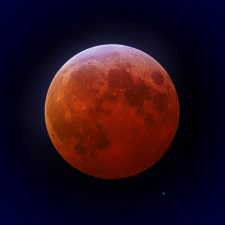
During a lunar eclipse, the Moon moves through the shadow of the Earth. Which means, that the Earth is positioned quite exactly between the Sun and Moon and casts its shadow onto the Moon. This is only possible at full moon and if some other requirements are met. Depending on whether the moon passes the partial or the core shadow of the Earth, we speak of a partial or total lunar eclipse.

When natural forces are involved, people are mostly torn between fear and fascination. They are looking for the challenge to come into contact with these forces. At the same time, everyone has to respectfully recognize these elemental forces, sooner or later. This becomes impressively apparent in surfing, when a person is gliding on a metre high wave on a surf board. If he manages to stay in front of the crest, and not to be rolled over by the breaking of the wave, he is the winner and in the belief to control the element. If he is not able to do so, it mostly turns dangerous or at least uncomfortable. It is a risky game.
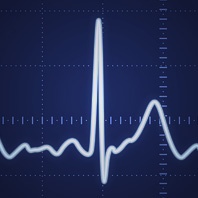
We have compared the amount of visitors from our full moon pages with the curve of an electrocardiogram (ECG) and came across an astonishing similarity. It almost appears as if the attention that we humans give to full moon would have its own heartbeat …
It is obvious that the interest in full moon can be linked to its rhythm. The average duration of a moon month is approx. 29.5 days, so a little bit more than four weeks and a little bit less than one calendar month. One can safely say, a lot of people are paying attention to the moon at full moon and clearly a lot less so during the other moon phases.

The word “aggression” derives from the Latin verb “aggredi” which means »approach, attack«. This is interesting, because it does not only contain a destructive energy, but also a proceeding, solution-oriented energy. We also speak of tackling problems or approaching a task. During the course of the centuries, the component of attacking and destroying appears to have become dominant, so much so, that we judge aggression nowadays negatively and see the result to be destruction, violence and war. It is easily understandable now, why people are having such a difficult time to deal naturally with their aggressions that they express or restrain. We have put a negative mark on it. And we neither want to carry something negative inside us, nor do we want to voice it.
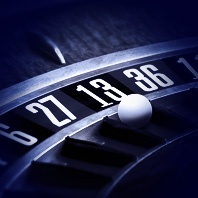
Today is Friday 13th and we wanted to take a look at, whether it is considered lucky and what this has to do with the full moon. Interestingly enough, the interpretation of the number 13 has developed in various directions in different countries and cultures and you can find as many examples for bad luck, as much as the ones that promise good luck, albeit diverse interpretations exist.
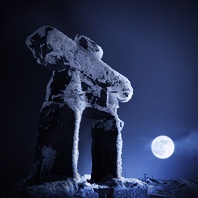
When taking a look at the Inuit [*] in the far north, you will find astonishing myths about the full moon. The Inuit live along the Arctic Ocean from the north east of Russia to Greenland and Canada, where coldness reigns. The culture is imprinted by an archaic consciousness, life is interwoven with legends that were never written down, due to harsh living conditions, but only passed down by word of mouth.
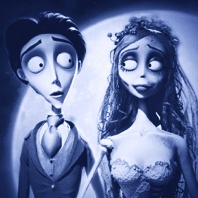
Fitting in with today’s full moon and the forthcoming events of Halloween, we dedicate this article to the stop motion movie »Corpse Bride« (2005) by Tim Burton, the master of bizarre and subtle productions. The movie is based on a Russian legend »Corpse Bride« and captures the story of a wedding between two people of varying social backgrounds (Victor & Victoria) or rather differing worlds (Victor & Emily), with the resulting tension.

In German we call the weeks after the wedding »Flitterwochen«, which has really no relevance to the moon. In many languages it is referred to as »honey moon«, which derives from »honey month« and therefore denotes a specific time with particular sweetness after the wedding. However, not always has the connection to the moon been interpreted positively, because one saw in the waning of the Moon the symbol of the decline of attraction that the happy couple would experience during the course of years after the wedding.

Who believes to see a staggering Moon at night, has probably had a drop too much, although a staggering movement of the Moon actually exists in astronomy. This is called »libration«, but happens very slowly and is therefore only visible by the naked eye in time-lapse photography.
The Moon orbits around the Earth in a so called synchronous rotation. This means that it always faces one hemisphere towards the Earth, while the reverse side of the Moon is not visible from Earth. Due to certain physical conditions (relating to orbits, angular velocity, centres of mass, among others), what happens is that the visible surface of the Moon varies slightly during the course of the moon cycle, and there is a gentle change of inclination of the Moon’s axis or it appears to turn a little.
We have been pondering about, whether a banknote does exist with a depiction of the Moon. Thanks to Google, we found something and discovered a variety of examples from different countries – with popular and less well known currencies. On the left you can see a detail of a Swiss 10 francs note, which depicts our solar system with several planets, amongst them also our Earth and its Moon.
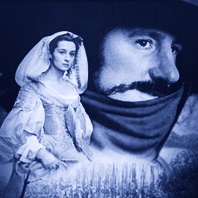
Cyrano de Bergerac (1619–1655) was a French writer, who was less famous for his own pieces [*], but better known through the writings about him by Edmond Rostand (1868–1918) from 1897. The piece was called just like himself »Cyrano de Bergerac« and premiered as stage play in Paris in the same year.
Up until today, it has been staged and filmed many times. The movie that is surely most famous is the one with Gerard Depardieu in the leading role from 1990. All dialogues are versified, which lends everything a historicising but also an intense, poetic effect.